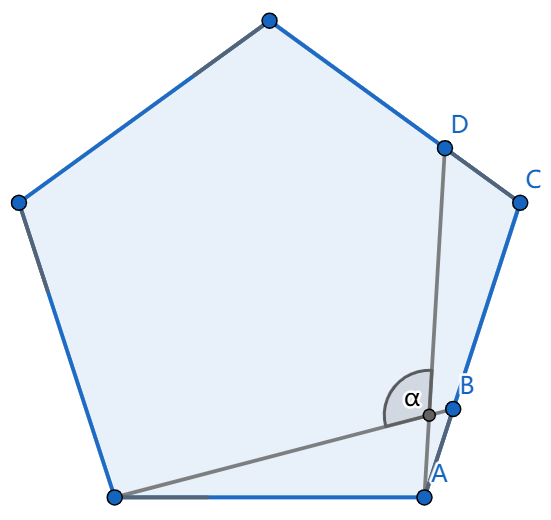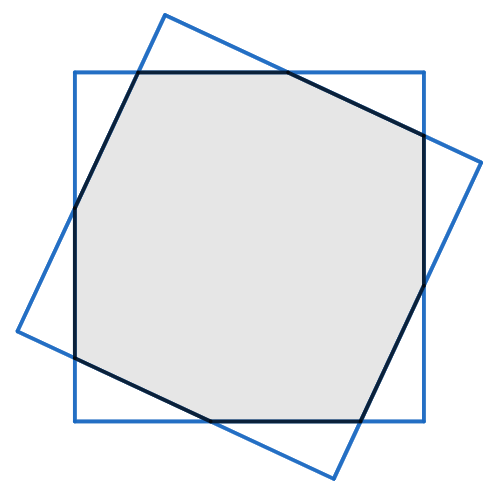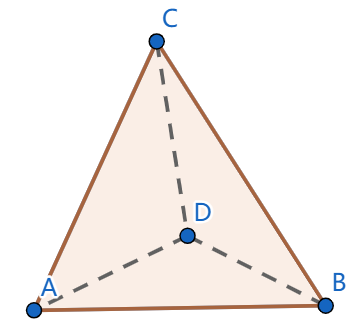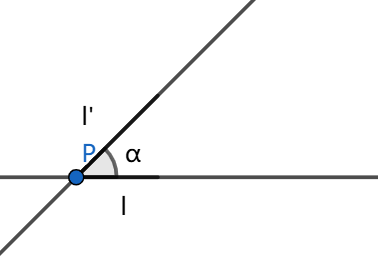Problems
Take a pile of cards, Ace to 7 of Diamonds. Consider the following shuffle: simultaneously move the first card to the third position, the third card to the fifth position, the fifth card to the seventh position, and the seventh card to the first position. Also move the second card to the fourth position, the fourth card to the sixth position and the sixth card to the second position.
How many times do you have to do this one specific shuffle in a row to get back to where you started?
How many permutations are there of 4 cards leaving no card in the same position as before?
In the picture below, we have a regular pentagon. The segments \(AB\) and \(CD\) have equal lengths. What is the angle \(\alpha\)?

We have two squares sharing the same centre, each with side length \(2\). Show that the area of overlap is at least \(3\).

A regular tetrahedron is a three dimensional shape with four faces. Each face of a regular tetrahedron is an equilateral triangle. Describe all rotational symmetries of a regular tetrahedron.

Two lines intersect at a point \(P\) at an angle of \(\alpha\). Show that a rotation in the plane around the point \(P\) through an angle \(2\alpha\) can be achieved by a reflection in one of the two lines followed by a reflection in the other line.

Show that a rotation about an axis on a sphere followed by a rotation about a different axis is again a rotation about some axis.
You have in your possession a rotation of the sphere about an axis \(l\) through an angle \(\alpha\neq k\times360^{\circ}\) for any integer \(k\).
Consider the following funny rules. Suppose you have a rotation \(r_1\) through an angle \(\theta\) around an axis \(m\) and a rotation \(r_2\) through an angle \(\theta'\) around an axis \(m'\). You can add to your possession each of the below:
the rotation \(r_1^{-1}\) through \(-\theta\) around \(m\);
the rotation \(r_2r_1\) obtained by doing \(r_1\) and then \(r_2\);
the rotation \(g^{-1}r_1g\), where \(g\) is any rotation of the sphere.
Can you get all the rotations of the sphere?
Let us colour each side of a hexagon using one of yellow, blue or green. Any two configurations that can be rotated or reflected onto each other will be the same colouring for us. How many colourings are there?
Let \(u\) and \(v\) be two positive integers, with \(u>v\). Prove that a triangle with side lengths \(u^2-v^2\), \(2uv\) and \(u^2+v^2\) is right-angled.